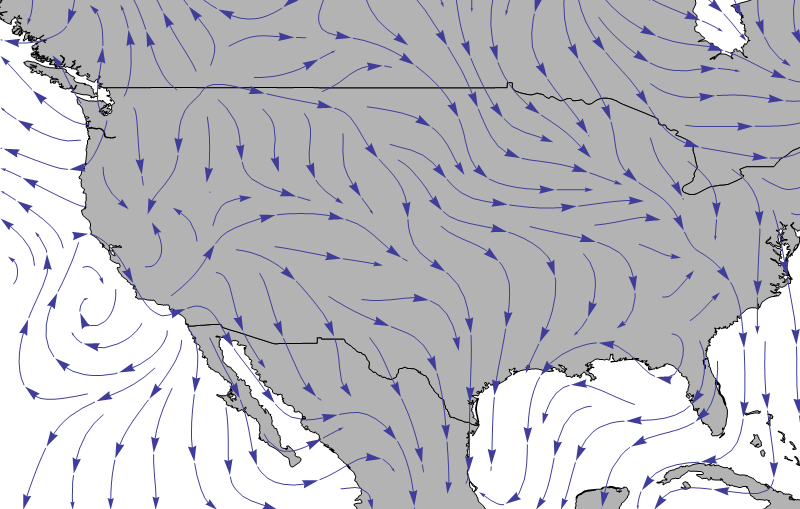7.1: Velocity Fields
( \newcommand{\kernel}{\mathrm{null}\,}\)
Suppose we have water flowing in a region A of the plane. Then at every point (x,y) in A the water has a velocity. In general, this velocity will change with time. We’ll let F stand for the velocity vector field and we can write
F(x,y,t)=(u(x,y,t),v(x,y,t)).
The arguments (x,y,t) indicate that the velocity depends on these three variables. In general, we will shorten the name to velocity field (Figure 7.1.1).

A dynamic beautiful and mesmerizing example of a velocity field is at http://hint.fm/wind/index.html. This shows the current velocity of the wind at all points in the continental U.S.


